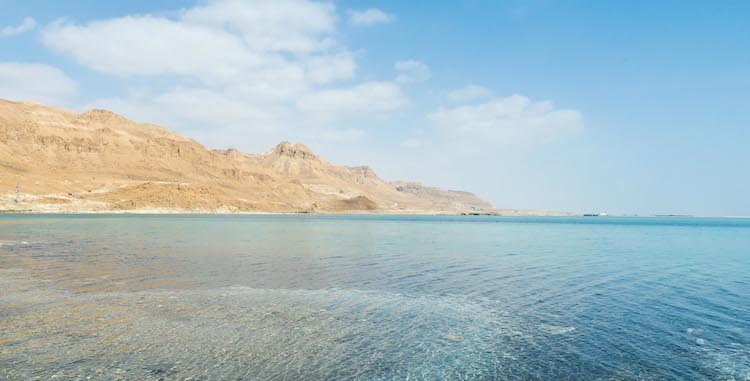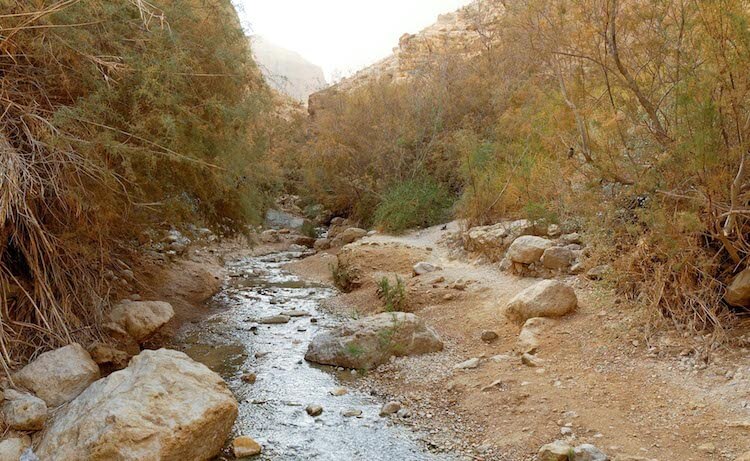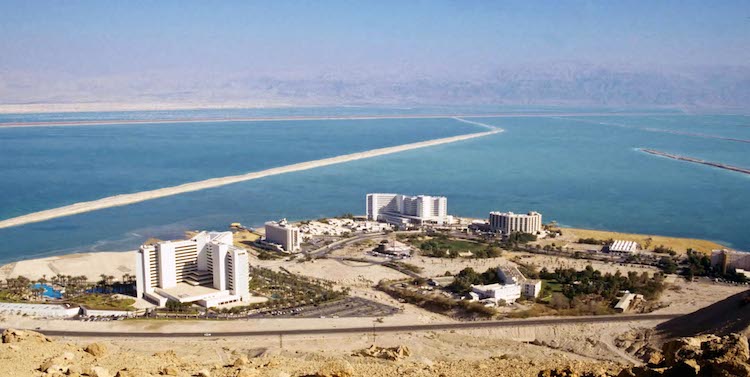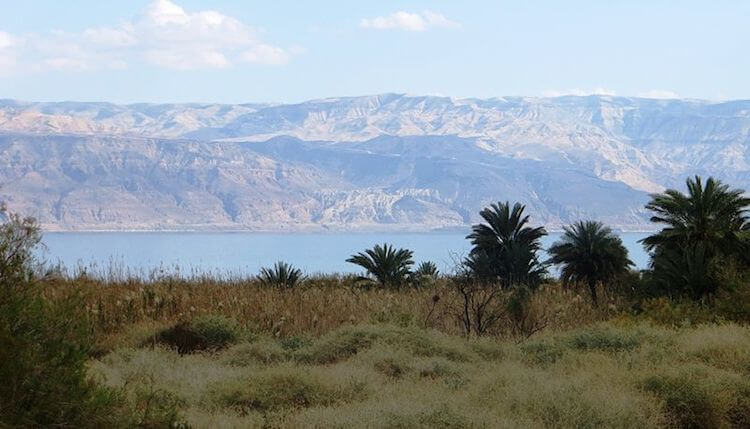Life at the Dead Sea sounds like an oxymoron. After all, nothing but microbes can survive in the brine. But beside the sea, several springs give life and beauty to an otherwise barren place.

(Photo: The Dead Sea north of Ein Bokek. Courtesy of the Pictorial Library of Bible Lands)
If you want to find where history took place, just look for the waterholes.
The most famous spring on the Dead Sea’s western shore is Ein Gedi. But two other springs offer life to the barren area—as well as beautiful places to see.
All give testimony to God’s grace in surprising place.
Ein Bokek
Few are the fertile places in the Judean Wilderness, and the Ein Bokek Nature Preserve offers one of the most enjoyable.

(Photo: Water still flows from the Nahal Bokek. Courtesy of the Pictorial Library of Bible Lands)
A fresh spring flows down the Nahal Bokek through the wilderness, offering hikers of all ages a delightful path on which to enjoy the natural beauty, including tropical flora, waterfalls, and clear pools of water.
- The spring drains to the Dead Sea at the luxurious hotels at Ein Bokek.
- The medicinal benefits of the Dead Sea in this area have remained well known from antiquity.
- Ancient ruins include a 4th-century Roman fort used until the 7th-century Muslim invasion.

(Photo: The Ein Bokek hotels beside the Dead Sea. Courtesy of the Pictorial Library of Bible Lands)
Ein Feshkha
North of Ein Bokek, few places around the western edge of the Dead Sea seem as charming as the oasis of Ein Feshkha. The fresh streams and saltwater surfacing from crags in the cliffs form a nature reserve of leisure for tourists and protection for flora and fauna.

(Photo: The Dead Sea from Ein Feshkha. By Yehudit Garinkol Pikiwiki Israel CC-BY-2.5, via Wikimedia Commons)
- The archaeologist’s spade has revealed occupation at Ein Feshkha from the first centuries BC and AD.
- Findings include a massive two-story building identified as a villa with a Roman courtyard.
The public section of the Ein Feshkha reserve allows visitors to hike the trails, picnic in the shade, and swim in the natural mineral pools. With advance reservations, guests can enjoy a guided tour of the reserve’s southern section, which includes native flora and fauna.
Check out this video about the reserve.
Oases of Grace
Before the obliteration of Sodom and Gomorrah, the Jordan Valley looked like the “garden of the Lord” (Genesis 13:10). But afterwards, many springs that bubbled beside the Dead Sea tasted too salty to swallow. The plentiful waters gave nothing in the way of sustenance.
In this barren region that has struggled to support life since the destruction of Sodom and Gomorrah, Ein Bokek and Ein Feshkha have flowed for thousands of years as a longstanding testimony to God’s grace.
Tell me what you think: What oases of grace do you see in your life? To leave a comment, just click here.
You’ll find these sites and more in a book I wrote for the Israel Ministry of Tourism, 100 Off-The-Beaten-Path Sites. You can download a free copy.
